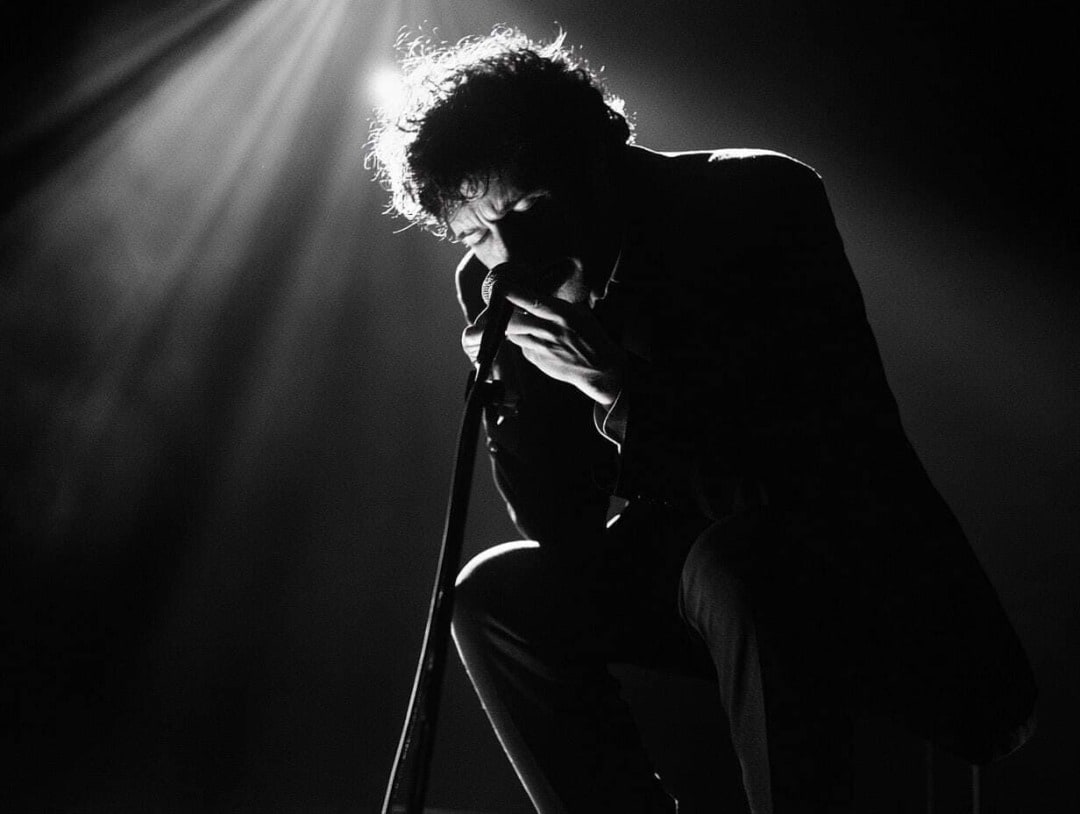Dylan is more than a name—it’s a symbol of blues, music, and time. His songs, crafted over decades, are not just tracks on an album; they are records of life, reflections of love, and symbols of soul. With a guitar slung over his shoulder, harmonica at his lips, and lyrics full of meaning, he became the singer and songwriter that redefined what a good artist could be. Every year, every release, every band that followed owes something to his unique sound.
His early records redefined what a songwriter could express with just a guitar and a voice shaped by time.
The First Notes of a Long Career
In the early 60s, a young Bob moved to New York and brought with him a passion for blues and folk. That year, his debut album dropped—a recording full of raw vocals and guitar playing that showed promise. Though not his best, the album made people take notice. It wasn’t long before another release introduced the world to a new man in music. Tracks like “Highway 51 Blues” revealed his love for traditional song forms, and the harmonica became an inseparable part of his musical identity.
His second album, The Freewheelin’ Bob Dylan, brought songs that hit harder and lived longer. It was full of soul and lyrical brilliance. People played it again and again. Songs like “Blowin’ in the Wind” became essential. You didn’t just hear them—you felt them. The sound was richer, the stories deeper, the guitar warmer. Produced by John Hammond, it was a good year for storytelling and rebellion, wrapped in musical genius. Among the greatest guitarists of his era, he stood out not for speed, but for the raw emotion etched into his records.
Albums That Changed the Game
By the mid-60s, Bob was on fire. Albums like Bringing It All Back Home, Highway 61 Revisited, and Blonde on Blonde weren’t just released—they were unleashed. They broke barriers between blues, rock, and folk. He could take a simple story, add a touch of soul, and turn it into a song that lived forever. Tracks like “Like a Rolling Stone” redefined what a song—even a long one—could be. Produced with flair, it showed that he didn’t need a band to make magic.
Even in a rough recording, the voice carries weight—proof that playing from the heart matters more than sounding well-produced.
That period gave us some of his best music, filled with life, love, and the full depth of human experience. The recordings felt live, the vocals hit hard, and each album was a masterpiece in sound and structure. Over the years, his transition from acoustic folk to electric rock sparked controversy but reshaped popular music.
With each new release, as a guitarist, and producer he pushed the boundaries of what music could express. He was a storyteller, a magician of the guitar and a master of the harmonica—his ever-loyal harmonica. Over time, his records became a masterclass in storytelling, each song a snapshot of rebellion, love, or change.
The Power of Live and the Legacy of Love
Watching Dylan live was like witnessing history. The way he played guitar, the way he handled the harp, the way he sang—each performance was its own album. The crowd didn’t just listen; they lived each moment. His live energy turned old songs into new adventures. And even when backed by a band, it was always clear: he was the star.
Every track feels like a moment captured in time, a recording where the artist is simply playing what feels true.
He sang of love and life, but not in clichés. His music was fresh, full of soul, always pushing deeper. Whether produced in a studio or recorded live, each song felt personal. It’s no wonder he won a Grammy for Time Out of Mind, an album where every track whispered something good and true. It was a release that brought a long career into new light. Many modern songwriters still turn to his classic records for inspiration, drawn by the poetic depth in every song.
Rock historians often cite the moment he released electric material in 1965 as a defining shift in the genre.
Influence Without Limits
From punk to pop, indie to soul, artists across the world owe something to Dylan. You could hear his influence in how bands arranged their songs, how they sang about time, love, or even the world’s chaos. Artists followed his lead—not to copy him, but to find their own voice. John, Neil, and many others played the way Dylan played: with purpose.
The Basement Tapes, recorded with The Band, were a playground of ideas. It was a time when Dylan let loose, producing tracks that felt both free and full of meaning. Those sessions weren’t polished, but they were good. They were released later, and what was once hidden became some of the best albums for fans hungry for more. He proved that records don’t need to be polished to be powerful—they just need truth, time, and a fearless songwriter.
Bob Dylan & Cinema
The recent biopic starring Timothée Chalamet promises to be a musical celebration of the artist’s legendary career. The film, which will explore Dylan’s early years in the 1960s folk and blues scene, focuses on the recording sessions and the pivotal band moments that shaped his life. With a strong emphasis on songs, lyrics, and vocals, it will portray the guitarist, the songwriter, and the singer in his most raw, live essence.
Audiences will witness his evolution, from a man with a guitar and a harp to a producer of some of the best albums in rock history. The album “The Freewheelin’ Bob Dylan”, the track “Like a Rolling Stone”, and the timeless recorded performance of “Blowin’ in the Wind”will be part of this full cinematic journey. Directed by James Mangold and featuring John Goodman in a supporting role, the release is set to capture the soul and sound of Dylan’s music in a way that people have never experienced before. It’s not just a story of an artist, but a story of music, love, and time—a tribute to the artist, his Grammy-winning legacy, and the countless artists he’s influenced. Fans hope it will be the best recorded album of his life—on screen, at least. This will be more than just a release; it will play like a living, breathing record, a good reminder of why he is the producer of his own legend, and why his music still plays so well after all these years and times.
Harmonica: The Harp That Spoke
The harmonica wasn’t just an instrument. It was a voice that carried his emotions when words fell short. On “The Times They Are A-Changin’,” it didn’t just accompany the lyrics; it shouted with them. Over the years, his technique evolved, but it always remained central to his music.
In Modern Times, the track “Thunder on the Mountain” showed a man still in full command of his tools. The guitar was sharp, the vocals strong, the lyrics poetic—and the harp? As powerful as ever. It wasn’t just a callback to blues roots; it was proof that as a guitarist and a poet, even after all those years, he still had something to say. Every note, every song was recorded with care.
A Career That Plays On
He has released more than two dozen albums—each one different, yet unmistakably his. Each year added a new chapter to a career already packed with records that defined generations. Whether you’re playing the early blues albums or his late-career releases, there’s a story in every track, a heartbeat in every lyric. In later years, his live performances with a full band brought new energy to older acoustic songs.
He won awards—Grammys, a Nobel Prize, and more—but it’s not the trophies that define him. It’s the songs. It’s how people, year after year, come back to those classics, those recordings, and say, “That’s the sound of truth.” He’s lived a long life in music, and every release, every song, every live show is proof that, as a singer and a guitarist, he is one of a kind.
Must-Hear Tracks That Feature the Harp
- “Blowin’ in the Wind” – Folk protest meets blues heart.
- “Like a Rolling Stone” – Rock meets rebellion.
- “Tangled Up in Blue” – A journey through love and life.
- “The Times They Are A-Changin’”– Urgent, timeless, raw.
- “Thunder on the Mountain”– Late-career power and groove.
Final Words
Dylan’s music is a long, winding road—one of soul, of good music, of full albums, and unforgettable recordings. He’s the singer, the songwriter, the guitarist, and the producer. He’s lived many lives through his songs and made every year count. Every person who hears his music knows: this is the best of what music can be. He will always play on, as long as people keep listening.
Across more than sixty years of performing, he continuously released albums that pushed the boundaries of rock songwriting and sound.
His path was never typical, but the Grammy Awards still made room to play tribute. He didn’t always play the game, yet he ended up with multiple Grammy wins and even a Lifetime Achievement Grammy. Well into his career, he continued to play with expectations, showing up at the Grammy stage only when it truly mattered. And well, whether he aimed for it or not, the Grammys couldn’t ignore the way he made music play across generations.
Because when Dylan plays, the guitar sings, the harp wails, and time stops—just for a moment.
🎸 FAQ: Backing Tracks and Musical Performance – In the Spirit of the Greats
Q: Can a guitarist still put on a powerful show using backing tracks?
Definitely. Even solo performers, much like that legendary folk-rock troubadour of the ’60s, have proven that a strong message and stage presence can carry a performance—with or without a full band. Backing tracks simply offer more musical texture for modern guitarists.
Q: Did iconic artists like John Lennon ever use backing tracks?
While John and his contemporaries often performed with live bands, their studio innovations paved the way for today’s use of backing tracks. That poetic voice from the Midwest, for example, embraced layered sounds in his later work, showing that evolution is part of artistry.
Q: Does using backing tracks make the show feel less real?
Not when done right. The key is authenticity. Some of the most respected artists—those known for raw vocals, honest lyrics, and a guitar in hand—used every tool available to serve the song. Backing tracks are just another way to keep the musical vision intact.
Q: How can I keep the performance feeling live and honest?
Play like the message matters. That man who turned folk into firestorms didn’t rely on polish—he relied on truth. If your backing tracks support your voice and your instrument rather than replacing them, your performance will stay just as genuine.



